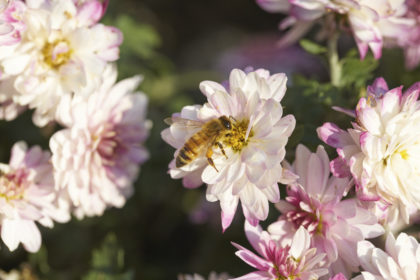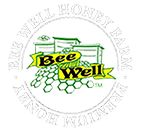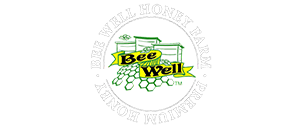
The bad news: Bee habitat is on the decline, and honeybee populations are crashing. The good news: a small garden gesture can have a very positive impact! How can one person help increase the bee population and diversity? Easy! By simply providing a consistent source of pollen and nectar and creating a safe habitat, you can instantly create a safe haven for the entire life cycle of our pollinating friends. In return, the bees will not only amplify your garden’s fruit and veggie yield but will also provide you with nature’s most delicious, healthy food: honey!
What to plant
Choose a variety of flowers that have staggered bloom periods throughout the year, ensuring a steady food supply for the bees. The USDA plant hardiness zone map can help you choose optimal plants, both for survival and for bloom time. Native plants will not only foster native bee communities, but will also promote habitat for other native insects, birds, and wildlife. Native plants will also help to strengthen the natural enemies of your plants and their pests, protecting both the bees and your garden. Local plant nurseries will be able to help you select native plants. To attract bees, it is best to avoid hybridized plants. While attractive to us, hybridized plants have been bred not to seed, so their pollen is scarce.
Diversify
Bees love purple, blue, violet, yellow, and white. Plant flowers of a single species in clusters of about four-foot diameter, to help catch the eyes of the bees. A variety of flower shapes will attract a diversity of bees, though single flower tops, such as marigolds or daisies, produce more nectar than do double flower topped plants.
What to avoid
Herbicides and pesticides have many unintended consequences. Chief among them is the unintentional killing of the “good bugs”. With an eye toward soil (and subsequent plant) health, you will foster communities of natural predators, such as ladybugs, praying mantises, and spiders. The bonus, of course, is better health for kids, pets, and ourselves, as we venture forth into our gardens!
Providing shelter
Native bees need safe places to nest. While wood-nesting bees may take up residence in a beetle tunnel of a dead tree, a ground-nesting bee may excavate tunnels under bare ground. Bumble bees may nest in cavities, such as an abandoned rodent burrow. In lieu of setting aside a vacant piece of land for bees to inhabit, you could build a nesting block Alternatively, these portable nesting sites can be purchased at garden centers or backyard bird shops. Staking your box three to six feet above the ground is appropriate, with entrance holes facing southeast or east to capture the morning sun.




